ESPRESSIF SYSTEMS ESP32WROVERB Wi-Fi & Bluetooth Module User Manual
ESPRESSIF SYSTEMS (SHANGHAI) PTE LTD Wi-Fi & Bluetooth Module
User Manual
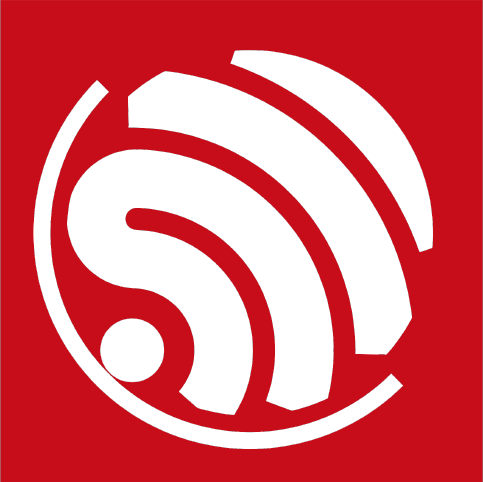
ESP32-WROVER-B/ESP32-WROVER-IB
Datasheet
Version 1.0
Espressif Systems

About This Guide
This document provides the specifications for the ESP32-WROVER-B/ESP32-WROVER-IB modules.
Revision History
For the revision history of this document, please refer to the last page.
Documentation Change Notification
Espressif provides email notifications to keep customers updated on changes to technical documentation. Please
subscribe here.
Certification
Download certificates for Espressif products from here.
Disclaimer and Copyright Notice
Information in this document, including URL references, is subject to change without notice. THIS DOCUMENT IS
PROVIDED AS IS WITH NO WARRANTIES WHATSOEVER, INCLUDING ANY WARRANTY OF MERCHANTABIL-
ITY, NON-INFRINGEMENT, FITNESS FOR ANY PARTICULAR PURPOSE, OR ANY WARRANTY OTHERWISE
ARISING OUT OF ANY PROPOSAL, SPECIFICATION OR SAMPLE.
All liability, including liability for infringement of any proprietary rights, relating to use of information in this docu-
ment is disclaimed. No licenses express or implied, by estoppel or otherwise, to any intellectual property rights
are granted herein. The Wi-Fi Alliance Member logo is a trademark of the Wi-Fi Alliance. The Bluetooth logo is a
registered trademark of Bluetooth SIG.
All trade names, trademarks and registered trademarks mentioned in this document are property of their respective
owners, and are hereby acknowledged.
Copyright © 2018 Espressif Inc. All rights reserved.
Contents
1 Overview 1
2 Pin Definitions 3
2.1 Pin Layout 3
2.2 Pin Description 4
2.3 Strapping Pins 5
3 Functional Description 7
3.1 CPU and Internal Memory 7
3.2 External Flash and SRAM 7
3.3 Crystal Oscillators 7
3.4 RTC and Low-Power Management 8
4 Peripherals and Sensors 9
5 Electrical Characteristics 10
5.1 Absolute Maximum Ratings 10
5.2 Recommended Operating Conditions 10
5.3 DC Characteristics (3.3V, 25°C) 10
5.4 Wi-Fi Radio 11
5.5 BLE Radio 11
5.5.1 Receiver 11
5.5.2 Transmitter 12
6 Dimensions 13
7 U.FL Connector Dimensions 14
15
15
8 Learning Resources
8.1 Must-Read Documents
8.2 Must-Have Resources 15
Revision History 16
List of Tables
1 ESP32-WROVER-B/ESP32-WROVER-IB vs. ESP32-WROVER/ESP32-WROVER-I 1
2 ESP32-WROVER-B/ESP32-WROVER-IB Specifications 2
3 Pin Definitions 4
4 Strapping Pins 5
5 Power Consumption by Power Modes 8
6 Absolute Maximum Ratings 10
7 Recommended Operating Conditions 10
8 DC Characteristics 10
9 Wi-Fi Radio Characteristics 11
10 Receiver Characteristics – BLE 11
11 Transmitter Characteristics – BLE 12
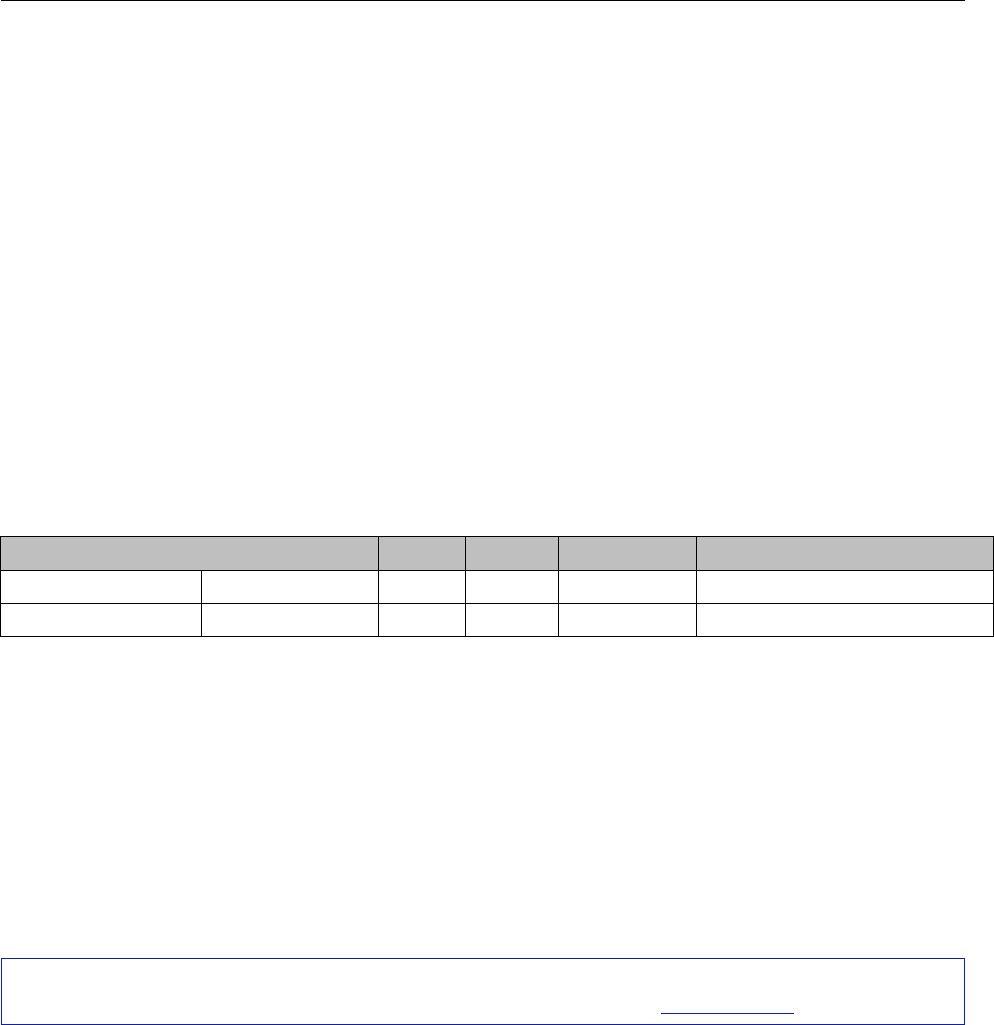
1. OVERVIEW
1. Overview
ESP32-WROVER-B is a powerful, generic WiFi-BT-BLE MCU module that targets a wide variety of applications,
ranging from low-power sensor networks to the most demanding tasks, such as voice encoding, music streaming
and MP3 decoding.
At the core of this module is the ESP32-D0WD chip*. ESP32-WROVER-B has an additional SPI Pseudo static
RAM (PSRAM) of 64 Mbits. As such, ESP32-WROVER-B features both 4 MB external SPI flash and 8 MB external
PSRAM.
The ESP32-WROVER-B module has a PCB antenna, while the ESP32-WROVER-IB uses an IPEX antenna. For
dimentions of the IPEX connector, please see Chapter 9.The information in this datasheet is applicable to
both of the two modules.
Table 1: ESP32-WROVER-B/ESP32-WROVER-IB
Module Chip embedded Flash PSRAM Antenna Dimensions (mm)
ESP32-WROVER-B ESP32-D0WD 4 MB 8 MB PCB antenna (18±0.15)x(31.4±0.2)x(3.5±0.15)
ESP32-WROVER-IB ESP32-D0WD 4 MB 8 MB IPEX antenna (18±0.15)x(31.4±0.2)x(3.5±0.15)
The chip embedded is designed to be scalable and adaptive. There are two CPU cores that can be individually
controlled, and the CPU clock frequency is 240 MHz. The user may also power off the
CPU and make use of the low-power co-processor to constantly monitor the peripherals for changes or crossing
of thresholds. ESP32 integrates a rich set of peripherals, ranging from capacitive touch sensors, Hall sensors, SD
card interface, Ethernet, high-speed SPI, UART, I2S and I2C.
Note:
* For details on the part number of the ESP32 series, please refer to the document ESP32 Datasheet.
The integration of Bluetooth, Bluetooth LE and Wi-Fi ensures that a wide range of applications can be targeted,
and that the module is future proof: using Wi-Fi allows a large physical range and direct connection to the internet
through a Wi-Fi router, while using Bluetooth allows the user to conveniently connect to the phone or broadcast
low energy beacons for its detection. The sleep current of the ESP32 chip is less than 5 µA, making it suitable
for battery powered and wearable electronics applications. ESP32 supports a data rate of up to 150 Mbps,
and 20.5 dBm output power at the antenna to ensure the widest physical range. As such the chip does offer
industry-leading specifications and the best performance for electronic integration, range, power consumption,
and connectivity.
The operating system chosen for ESP32 is freeRTOS with LwIP; TLS 1.2 with hardware acceleration is built in as
well. Secure (encrypted) over the air (OTA) upgrade is also supported, so that developers can continually upgrade
their products even after their release.
Table 2provides the specifications of ESP32-WROVER-B/ESP32-WROVER-IB.
Espressif Systems 1 ESP32-WROVER-B Datasheet V1.0
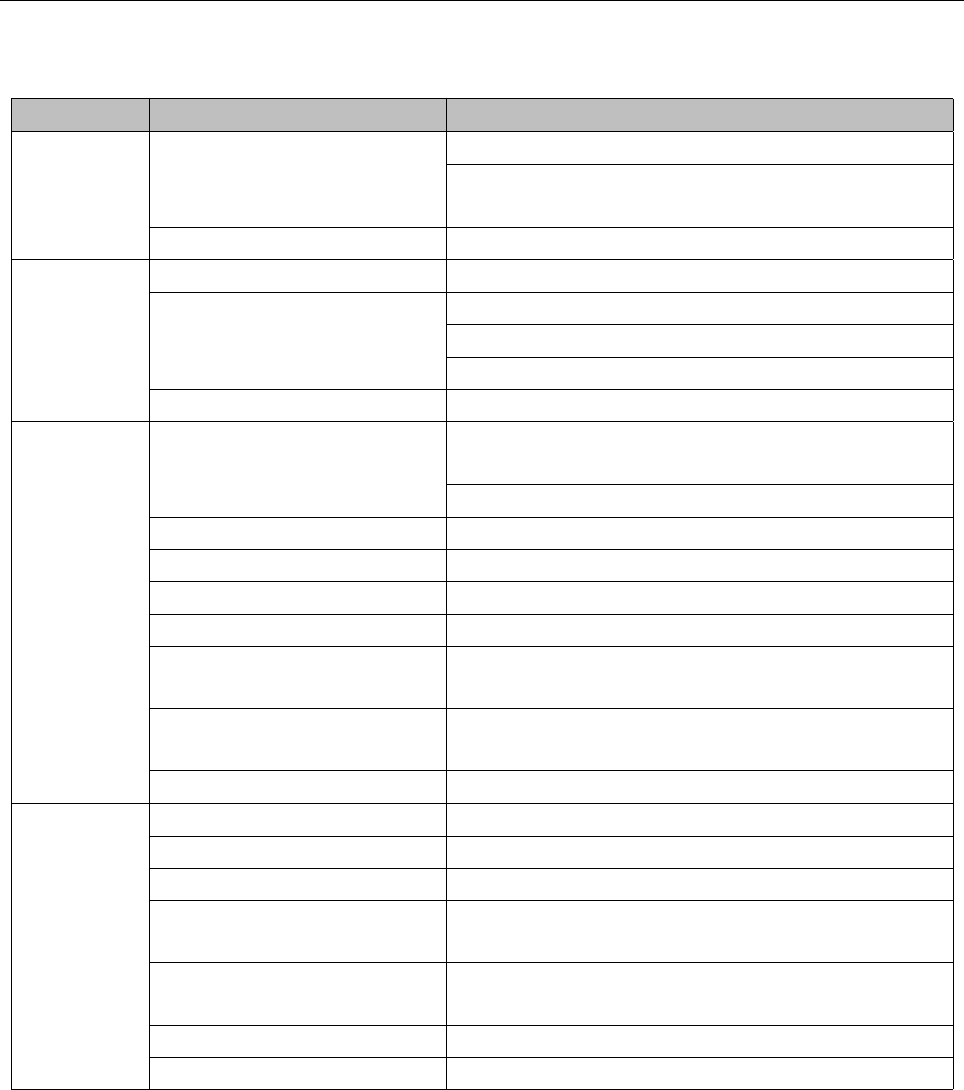
1. OVERVIEW
Table 2: ESP32-WROVER-B/ESP32-WROVER-IB Specifications
Categories Items Specifications
Wi-Fi Protocols
802.11 b/g/n20/n40
A-MPDU and A-MSDU aggregation and 0.4 µs guard in-
terval support
Frequency range 2412-2462MHz(802.11b/g/n-HT20),2422-2452MHz(802.11n-HT40)
Bluetooth
Protocols Bluetooth v4.2 BR/EDR and BLE specification
Radio
NZIF receiver with –97 dBm sensitivity
Class-1, class-2 and class-3 transmitter
AFH
Audio CVSD and SBC
Hardware
Module interface
SD card, UART, SPI, SDIO, I2C, LED PWM, Motor PWM,
I2S, IR
GPIO, capacitive touch sensor, ADC, DAC
On-chip sensor Hall sensor
On-board clock 40 MHz crystal
Operating voltage/Power supply 2.7 ~3.6V
Operating current Average: 80 mA
Minimum current delivered by
power supply 500 mA
Recommended operating tem-
perature range –40°C ~85°C
Package size (18±0.15) mm x (31.4±0.2) mm x (3.5±0.15) mm
Software
Wi-Fi mode Station/SoftAP/SoftAP+Station/P2P
Security WPA/WPA2/WPA2-Enterprise/WPS
Encryption AES/RSA/ECC/SHA
Firmware upgrade UART Download / OTA (via network) / download and write
firmware via host
Software development Supports Cloud Server Development / SDK for custom
firmware development
Network protocols IPv4, IPv6, SSL, TCP/UDP/HTTP/FTP/MQTT
User configuration AT instruction set, cloud server, Android/iOS app
Espressif Systems 2 ESP32-WROVER-B Datasheet V1.0
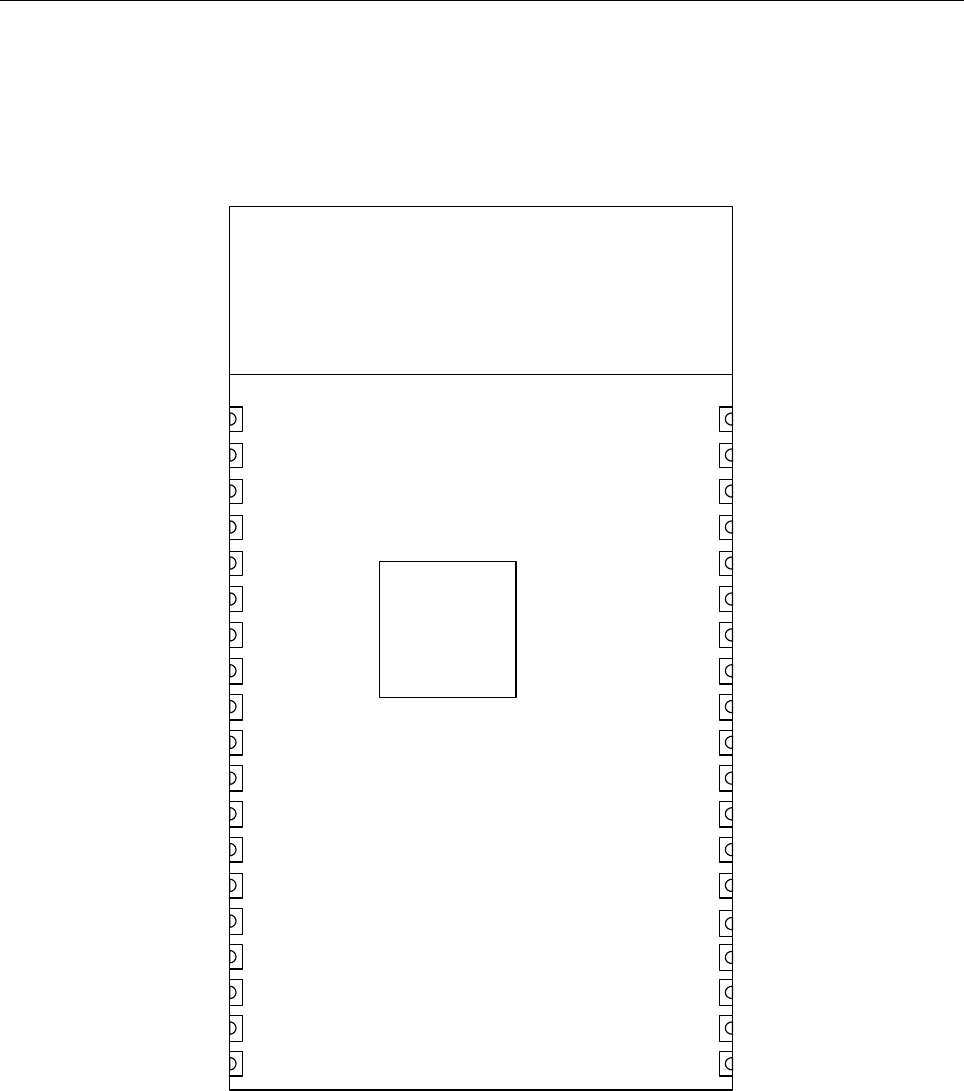
2. PIN DEFINITIONS
2. Pin Definitions
2.1 Pin Layout
Keepout Zone
VDD33
EN
IO14
IO12
IO33
IO25
IO26
IO27
GND
IO32
IO35
IO34
SENSOR_VN
SENSOR_VP
37
36
26
25
30
29
28
27
38
31
32
33
34
35
IO23
IO22
IO4
IO0
IO18
IO5
NC
NC
GND
IO19
NC
IO21
RXD0
TXD0
39:GND
3
13
14
9
10
11
12
8
7
6
5
4
15
16
17
18
IO13
GND
CMD
SD3
SD2
IO2
SD1
SD0
CLK
IO15
1
2
19
24
23
22
21
20
Figure 1: ESP32-WROVER-B/ESP32-WROVER-IB Pin Layout
Espressif Systems 3 ESP32-WROVER-B Datasheet V1.0

2. PIN DEFINITIONS
2.2 Pin Description
ESP32-WROVER-B/ESP32-WROVER-IB has 38 pins. See pin definitions in Table 3.
Table 3: Pin Definitions
Name No. Type Function
GND 1 P Ground
3V3 2 P Power supply.
EN 3 I Chip-enable signal. Active high.
SENSOR_VP 4 I GPIO36, ADC_H, ADC1_CH0, RTC_GPIO0
SENSOR_VN 5 I GPIO39, ADC1_CH3, ADC_H, RTC_GPIO3
IO34 6 I GPIO34, ADC1_CH6, RTC_GPIO4
IO35 7 I GPIO35, ADC1_CH7, RTC_GPIO5
IO32 8 I/O GPIO32, XTAL_32K_P (32.768 kHz crystal oscillator input), ADC1_CH4,
TOUCH9, RTC_GPIO9
IO33 9 I/O GPIO33, XTAL_32K_N (32.768 kHz crystal oscillator output), ADC1_CH5,
TOUCH8, RTC_GPIO8
IO25 10 I/O GPIO25, DAC_1, ADC2_CH8, RTC_GPIO6, EMAC_RXD0
IO26 11 I/O GPIO26, DAC_2, ADC2_CH9, RTC_GPIO7, EMAC_RXD1
IO27 12 I/O GPIO27, ADC2_CH7, TOUCH7, RTC_GPIO17, EMAC_RX_DV
IO14 13 I/O GPIO14, ADC2_CH6, TOUCH6, RTC_GPIO16, MTMS, HSPICLK,
HS2_CLK, SD_CLK, EMAC_TXD2
IO12 14 I/O GPIO12, ADC2_CH5, TOUCH5, RTC_GPIO15, MTDI, HSPIQ,
HS2_DATA2, SD_DATA2, EMAC_TXD3
GND 15 P Ground
IO13 16 I/O GPIO13, ADC2_CH4, TOUCH4, RTC_GPIO14, MTCK, HSPID,
HS2_DATA3, SD_DATA3, EMAC_RX_ER
SHD/SD2* 17 I/O GPIO9, SD_DATA2, SPIHD, HS1_DATA2, U1RXD
SWP/SD3* 18 I/O GPIO10, SD_DATA3, SPIWP, HS1_DATA3, U1TXD
SCS/CMD* 19 I/O GPIO11, SD_CMD, SPICS0, HS1_CMD, U1RTS
SCK/CLK* 20 I/O GPIO6, SD_CLK, SPICLK, HS1_CLK, U1CTS
SDO/SD0* 21 I/O GPIO7, SD_DATA0, SPIQ, HS1_DATA0, U2RTS
SDI/SD1* 22 I/O GPIO8, SD_DATA1, SPID, HS1_DATA1, U2CTS
IO15 23 I/O GPIO15, ADC2_CH3, TOUCH3, MTDO, HSPICS0, RTC_GPIO13,
HS2_CMD, SD_CMD, EMAC_RXD3
IO2 24 I/O GPIO2, ADC2_CH2, TOUCH2, RTC_GPIO12, HSPIWP, HS2_DATA0,
SD_DATA0
IO0 25 I/O GPIO0, ADC2_CH1, TOUCH1, RTC_GPIO11, CLK_OUT1,
EMAC_TX_CLK
IO4 26 I/O GPIO4, ADC2_CH0, TOUCH0, RTC_GPIO10, HSPIHD, HS2_DATA1,
SD_DATA1, EMAC_TX_ER
NC1 27 - -
NC2 28 - -
IO5 29 I/O GPIO5, VSPICS0, HS1_DATA6, EMAC_RX_CLK
IO18 30 I/O GPIO18, VSPICLK, HS1_DATA7
IO19 31 I/O GPIO19, VSPIQ, U0CTS, EMAC_TXD0
Espressif Systems 4 ESP32-WROVER-B Datasheet V1.0
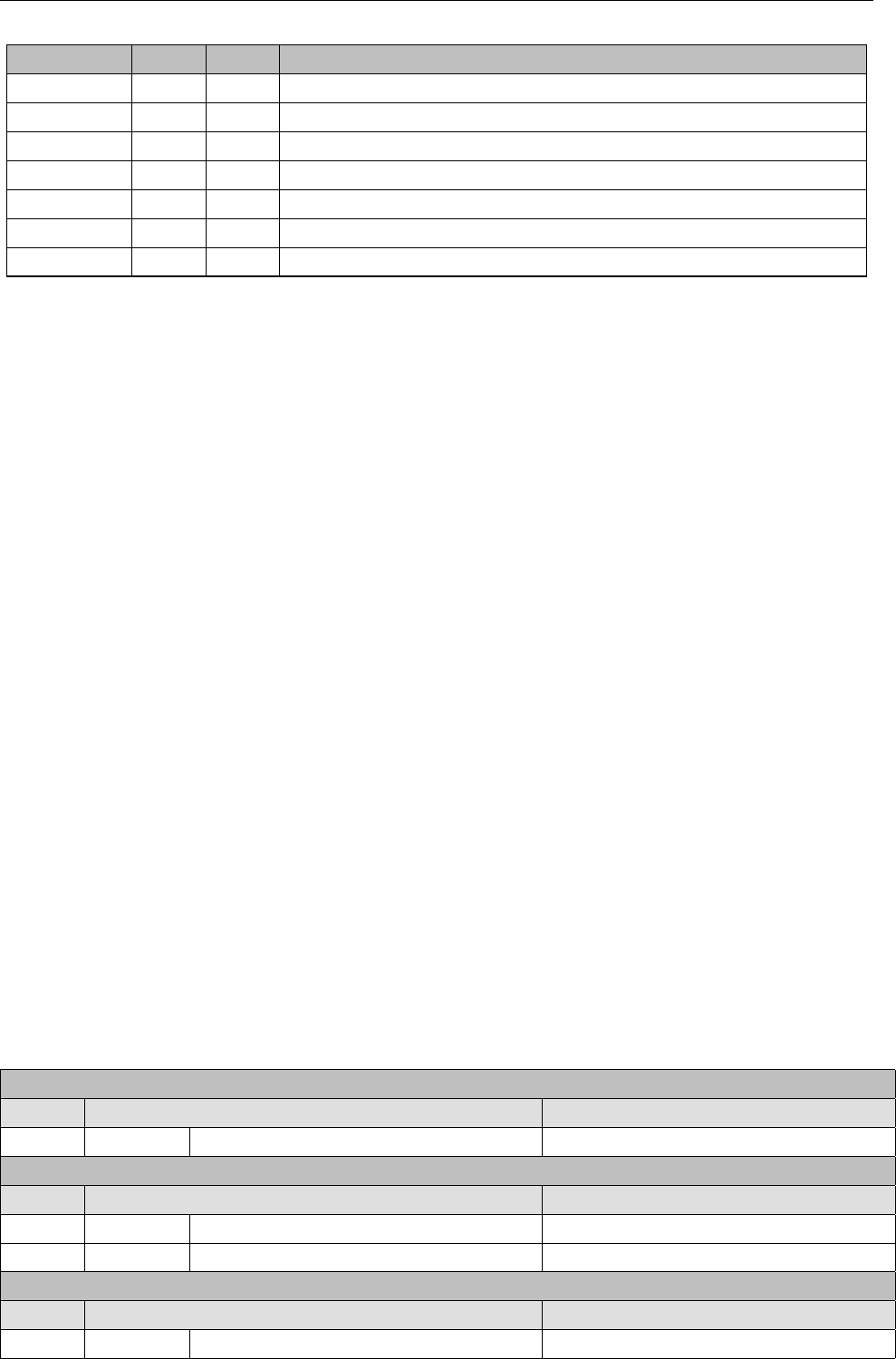
2. PIN DEFINITIONS
Name No. Type Function
NC 32 - -
IO21 33 I/O GPIO21, VSPIHD, EMAC_TX_EN
RXD0 34 I/O GPIO3, U0RXD, CLK_OUT2
TXD0 35 I/O GPIO1, U0TXD, CLK_OUT3, EMAC_RXD2
IO22 36 I/O GPIO22, VSPIWP, U0RTS, EMAC_TXD1
IO23 37 I/O GPIO23, VSPID, HS1_STROBE
GND 38 P Ground
2.3 Strapping Pins
ESP32 has five strapping pins, which can be seen in Chapter 6Schematics:
• MTDI
• GPIO0
• GPIO2
• MTDO
• GPIO5
Software can read the values of these five bits from register ”GPIO_STRAPPING”.
During the chip’s system reset (power-on-reset, RTC watchdog reset and brownout reset), the latches of the
strapping pins sample the voltage level as strapping bits of ”0” or ”1”, and hold these bits until the chip is powered
down or shut down. The strapping bits configure the device’s boot mode, the operating voltage of VDD_SDIO and
other initial system settings.
Each strapping pin is connected to its internal pull-up/pull-down during the chip reset. Consequently, if a strapping
pin is unconnected or the connected external circuit is high-impedance, the internal weak pull-up/pull-down will
determine the default input level of the strapping pins.
To change the strapping bit values, users can apply the external pull-down/pull-up resistances, or use the host
MCU’s GPIOs to control the voltage level of these pins when powering on ESP32.
After reset, the strapping pins work as normal-function pins.
Refer to Table 4for a detailed boot-mode configuration by strapping pins.
Table 4: Strapping Pins
Voltage of Internal LDO (VDD_SDIO)
Pin Default 3.3V 1.8V
MTDI Pull-down 0 1
Booting Mode
Pin Default SPI Boot Download Boot
GPIO0 Pull-up 1 0
GPIO2 Pull-down Don’t-care 0
Enabling/Disabling Debugging Log Print over U0TXD During Booting
Pin Default U0TXD Toggling U0TXD Silent
MTDO Pull-up 1 0
Espressif Systems 5 ESP32-WROVER-B Datasheet V1.0
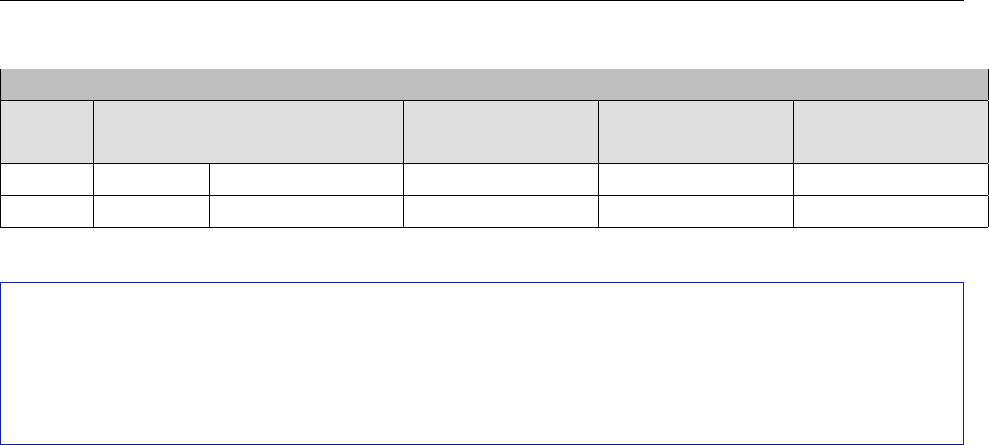
2. PIN DEFINITIONS
Timing of SDIO Slave
Pin Default Falling-edge Input
Falling-edge Output
Falling-edge Input
Rising-edge Output
Rising-edge Input
Falling-edge Output
Rising-edge Input
Rising-edge Output
MTDO Pull-up 0 0 1 1
GPIO5 Pull-up 0 1 0 1
Note:
• Firmware can configure register bits to change the settings of ”Voltage of Internal LDO (VDD_SDIO)” and ”Timing
of SDIO Slave” after booting.
• Internal pull-up resistor for MTDI is not populated in the module, as the flash and SRAM in ESP32-WROVER-
B/ESP32-WROVER-IB only support a power voltage of 3.3V (output by VDD_SDIO).
Espressif Systems 6 ESP32-WROVER-B Datasheet V1.0

3. FUNCTIONAL DESCRIPTION
3. Functional Description
This chapter describes the modules and functions integrated in ESP32-WROVER-B/ESP32-WROVER-IB.
3.1 CPU and Internal Memory
ESP32-D0WD contains two low-power Xtensa®32-bit LX6 microprocessors. The internal memory includes:
• 448 kB of ROM for booting and core functions.
• 520 kB of on-chip SRAM for data and instructions.
• 8 kB of SRAM in RTC, which is called RTC FAST Memory and can be used for data storage; it is accessed
by the main CPU during RTC Boot from the Deep-sleep mode.
• 8 kB of SRAM in RTC, which is called RTC SLOW Memory and can be accessed by the co-processor during
the Deep-sleep mode.
• 1 kbit of eFuse: 256 bits are used for the system (MAC address and chip configuration) and the remaining
768 bits are reserved for customer applications, including Flash-Encryption and Chip-ID.
3.2 External Flash and SRAM
ESP32 supports multiple external QSPI flash and SRAM chips. More details can be found in Chapter SPI in the
ESP32 Technical Reference Manual. ESP32 also supports hardware encryption/decryption based on AES to pro-
tect developers’ programs and data in flash.
ESP32 can access the external QSPI flash and SRAM through high-speed caches.
• Up to 16 MB of external flash can be mapped into CPU instruction memory space and read-only memory
space simultaneously.
–When external flash is mapped into CPU instruction memory space, up to 11 MB+248 KB can be
mapped at a time. Note that if more than 3 MB+248 KB are mapped, cache performance will be
reduced due to speculative reads by the CPU.
–When external flash is mapped into read-only data memory space, up to 4 MB can be mapped at a
time. 8-bit, 16-bit and 32-bit reads are supported.
• External SRAM can be mapped into CPU data memory space. SRAM up to 8 MB is supported and up to 4
MB can be mapped at a time. 8-bit, 16-bit and 32-bit reads and writes are supported.
ESP32-WROVER-B/ESP32-WROVER-IB integrates 4 MB of external SPI flash. The 4-MB SPI flash can be memory-
mapped onto the CPU code space, supporting 8, 16 and 32-bit access. Code execution is supported.
In addition to the 4 MB SPI flash, ESP32-WROVER-B/ESP32-WROVER-IB also integrates 8 MB PSRAM for more
memory space.
3.3 Crystal Oscillators
The module uses a 40-MHz crystal oscillator.
Espressif Systems 7 ESP32-WROVER-B Datasheet V1.0
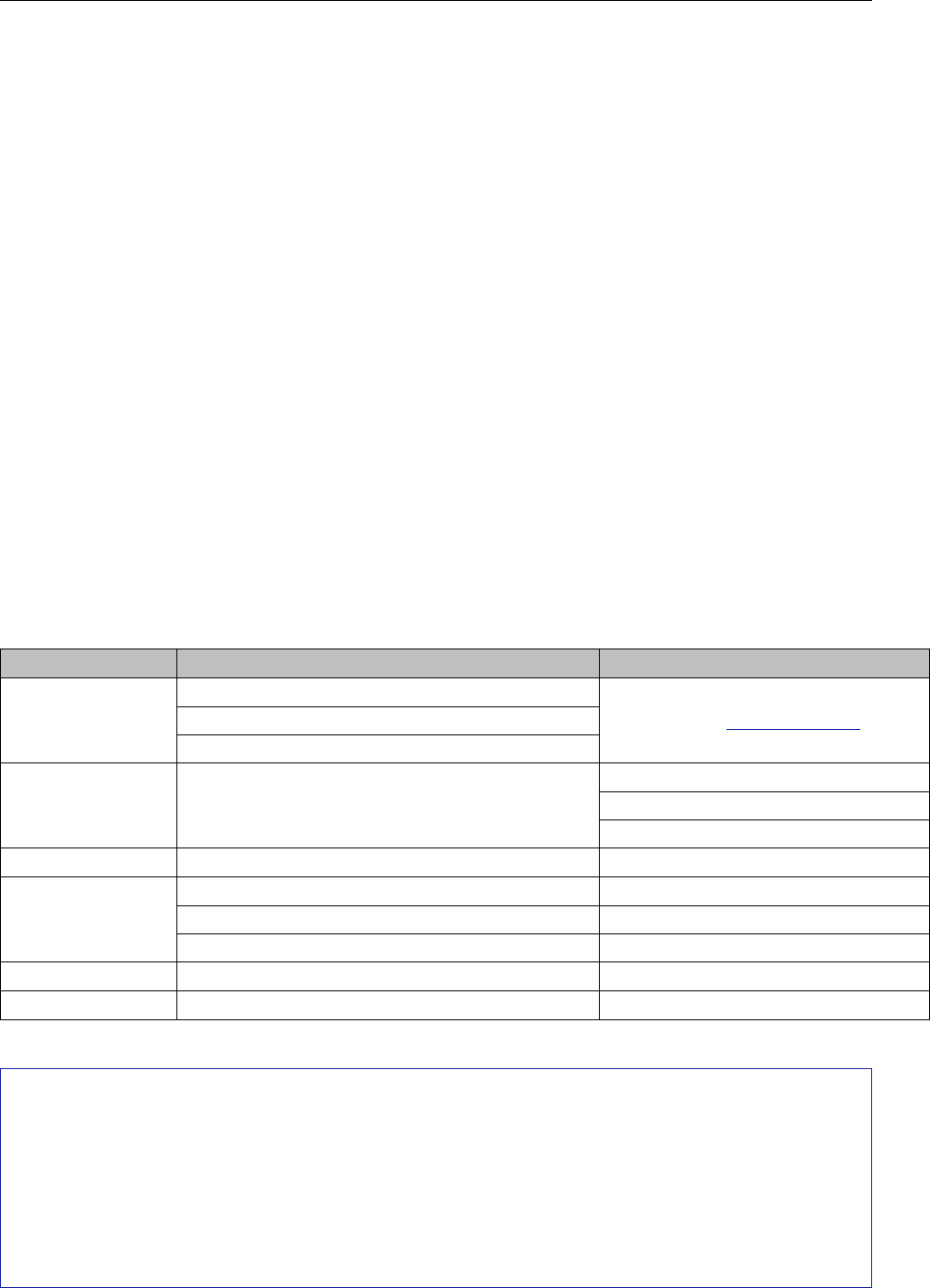
3. FUNCTIONAL DESCRIPTION
3.4 RTC and Low-Power Management
With the use of advanced power-management technologies, ESP32 can switch between different power modes.
• Power modes
–Active mode: The chip radio is powered on. The chip can receive, transmit, or listen.
–Modem-sleep mode: The CPU is operational and the clock is configurable. The Wi-Fi/Bluetooth base-
band and radio are disabled.
–Light-sleep mode: The CPU is paused. The RTC memory and RTC peripherals, as well as the ULP
co-processor are running. Any wake-up events (MAC, host, RTC timer, or external interrupts) will wake
up the chip.
–Deep-sleep mode: Only RTC memory and RTC peripherals are powered on. Wi-Fi and Bluetooth
connection data are stored in the RTC memory. The ULP co-processor is functional.
–Hibernation mode: The internal 8-MHz oscillator and ULP co-processor are disabled. The RTC recovery
memory is powered down. Only one RTC timer on the slow clock and certain RTC GPIOs are active.
The RTC timer or the RTC GPIOs can wake up the chip from the Hibernation mode.
The power consumption varies with different power modes and work statuses of functional modules. Please see
Table 5for details.
Table 5: Power Consumption by Power Modes
Power mode Description Power consumption
Active (RF working)
Wi-Fi Tx packet
Please refer to ESP32 Datasheet.Wi-Fi / BT Tx packet
Wi-Fi / BT Rx and listening
Modem-sleep The CPU is powered on.
Max speed 240 MHz: 30 mA ~50 mA
Normal speed 80 MHz: 20 mA ~25 mA
Slow speed 2 MHz: 2 mA ~4 mA
Light-sleep - 0.8 mA
Deep-sleep
The ULP co-processor is powered on. 150 µA
ULP sensor-monitored pattern 100 µA @1% duty
RTC timer + RTC memory 10 µA
Hibernation RTC timer only 5 µA
Power off CHIP_PU is set to low level, the chip is powered off 0.1 µA
Note:
• When Wi-Fi is enabled, the chip switches between Active and Modem-sleep mode. Therefore, power consumption
changes accordingly.
• In Modem-sleep mode, the CPU frequency changes automatically. The frequency depends on the CPU load and
the peripherals used.
• During Deep-sleep, when the ULP co-processor is powered on, peripherals such as GPIO and I2C are able to
operate.
• When the system works in the ULP sensor-monitored pattern, the ULP co-processor works with the ULP sensor
periodically; ADC works with a duty cycle of 1%, so the power consumption is 100 µA.
Espressif Systems 8 ESP32-WROVER-B Datasheet V1.0

4. PERIPHERALS AND SENSORS
4. Peripherals and Sensors
Please refer to Section 4 Peripherals and Sensors in ESP32 Datasheet.
Note:
External connections can be made to any GPIO except for GPIOs in the range 6-11, 16, or 17. GPIOs 6-11 are connected
to the module’s integrated SPI flash and PSRAM. GPIOs 16 and 17 are connected to the module’s integrated PSRAM.
For details, please see Section 6Schematics.
Espressif Systems 9 ESP32-WROVER-B Datasheet V1.0
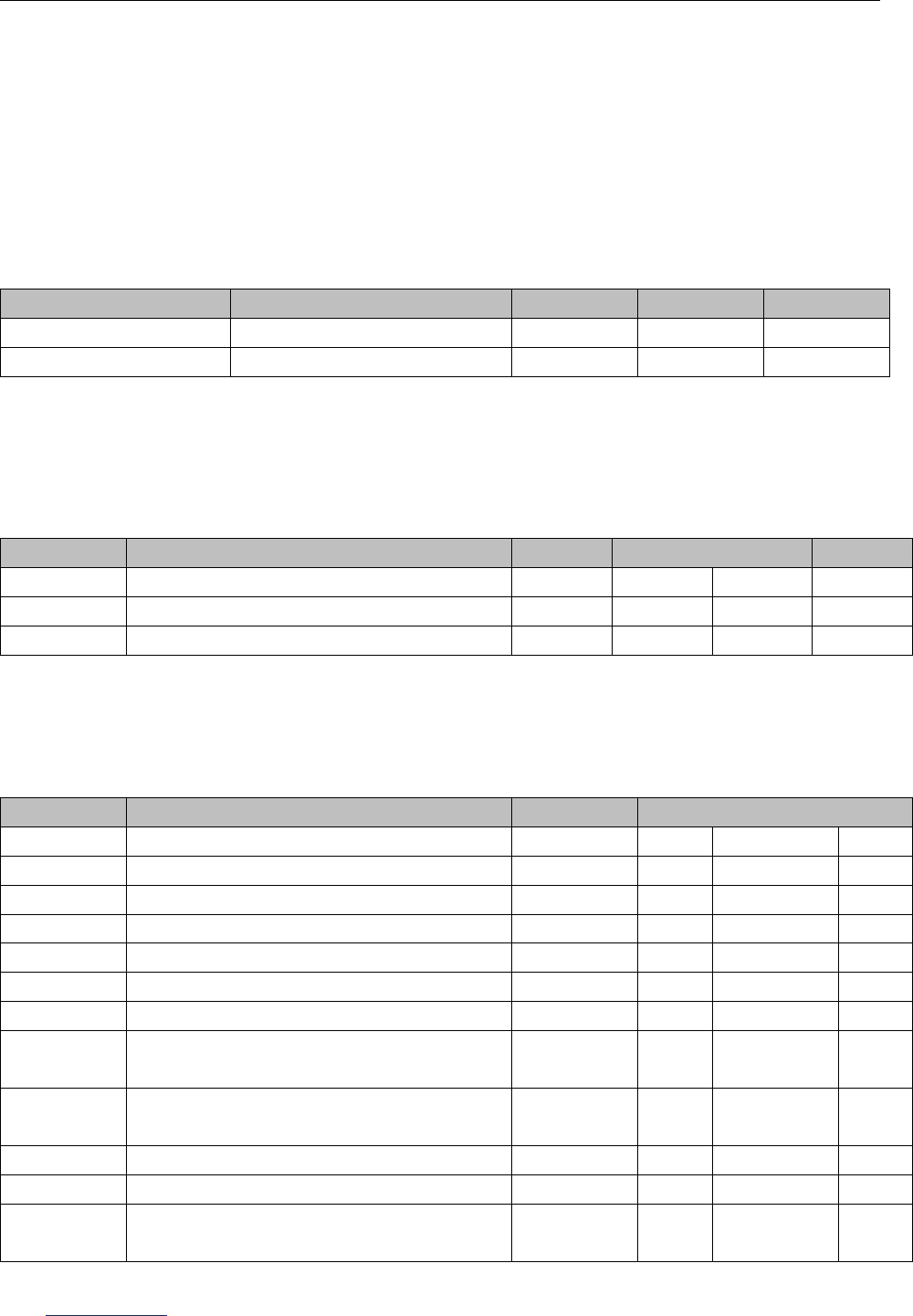
5. ELECTRICAL CHARACTERISTICS
5. Electrical Characteristics
5.1 Absolute Maximum Ratings
Stresses beyond the absolute maximum ratings listed in the table below may cause permanent damage to the
device. These are stress ratings only, and do not refer to the functional operation of the device.
Table 6: Absolute Maximum Ratings
Symbol Parameter Min Max Unit
VDD33 - –0.3 3.6 V
Tstore Storage temperature –40 150 °C
5.2 Recommended Operating Conditions
Table 7: Recommended Operating Conditions
Symbol Parameter Min Typical Max Unit
VDD33 - 2.7 3.3 3.6 V
IV DD Current delivered by external power supply 0.5 - - A
T Operating temperature –40 - 85 °C
5.3 DC Characteristics (3.3V, 25°C)
Table 8: DC Characteristics
Symbol Parameter Min Typ Max Unit
CIN Pin capacitance - 2 - pF
VIH High-level input voltage 0.75 × VDD1- VDD + 0.3 V
VIL Low-level input voltage –0.3 - 0.25 × VDD V
IIH High-level input current - - 50 nA
IIL Low-level input current - - 50 nA
VOH High-level output voltage 0.8 × VDD - - V
VOL Low-level output voltage - - 0.1 × VDD V
IOH
High-level source current (VDD = 3.3V, VOH =
2.64V, PAD_DRIVER = 3) - 40 - mA
IOL
Low-level sink current (VDD = 3.3V, VOH =
0.495V, PAD_DRIVER = 3) - 28 - mA
RP U Pull-up resistor - 45 - k�
RP D Pull-down resistor - 45 - k�
VIL_nRST
Low-level input voltage of EN to reset the mod-
ule - 0.6 - V
1. VDD is the I/O voltage for a particular power domain of pins. More details can be found in Appendix IO_MUX of
ESP32 Datasheet.
Espressif Systems 10 ESP32-WROVER-B Datasheet V1.0
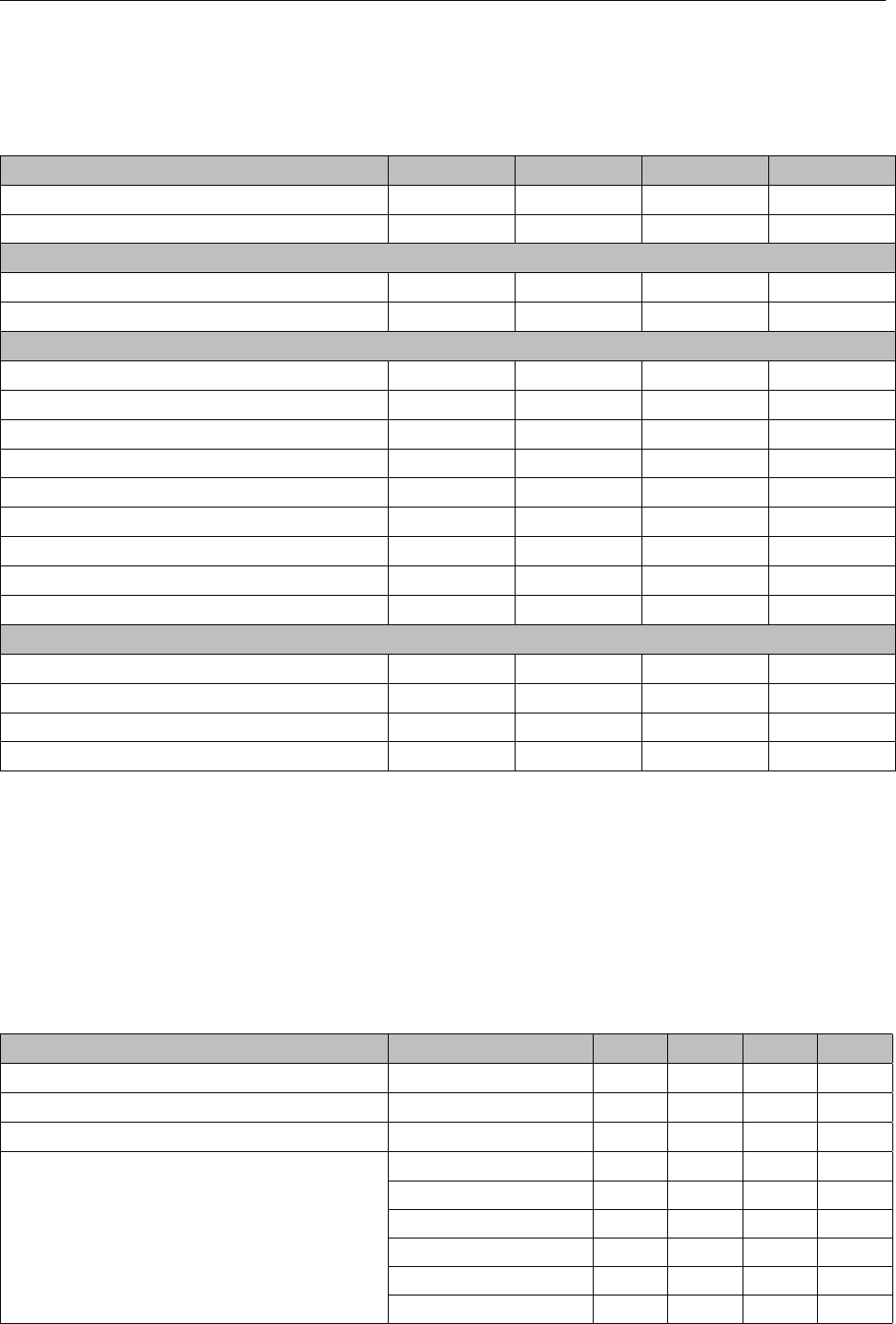
5. ELECTRICAL CHARACTERISTICS
5.4 Wi-Fi Radio
Table 9: Wi-Fi Radio Characteristics
Description Min Typical Max Unit
Input frequency 2412 - 2462 MHz
Output impedance* - * - Ω
Tx power
Output power of PA for 11b mode 22 23 24 dBm
Sensitivity
DSSS, 1 Mbps - –98 - dBm
CCK, 11 Mbps - –91 - dBm
OFDM, 6 Mbps - –93 - dBm
OFDM, 54 Mbps - –75 - dBm
HT20, MCS0 - –93 - dBm
HT20, MCS7 - –73 - dBm
HT40, MCS0 - –90 - dBm
HT40, MCS7 - –70 - dBm
MCS32 - –89 - dBm
Adjacent channel rejection
OFDM, 6 Mbps - 37 - dB
OFDM, 54 Mbps - 21 - dB
HT20, MCS0 - 37 - dB
HT20, MCS7 - 20 - dB
∗For the module that uses an IPEX antenna, the output impedance is 50Ω.
5.5 BLE Radio
5.5.1 Receiver
Table 10: Receiver Characteristics – BLE
Parameter Conditions Min Typ Max Unit
Sensitivity @30.8% PER - - –97 - dBm
Maximum received signal @30.8% PER - 0 - - dBm
Co-channel C/I - - +10 - dB
Adjacent channel selectivity C/I
F = F0 + 1 MHz - –5 - dB
F = F0 – 1 MHz - –5 - dB
F = F0 + 2 MHz - –25 - dB
F = F0 – 2 MHz - –35 - dB
F = F0 + 3 MHz - –25 - dB
F = F0 – 3 MHz - –45 - dB
Espressif Systems 11 ESP32-WROVER-B Datasheet V1.0
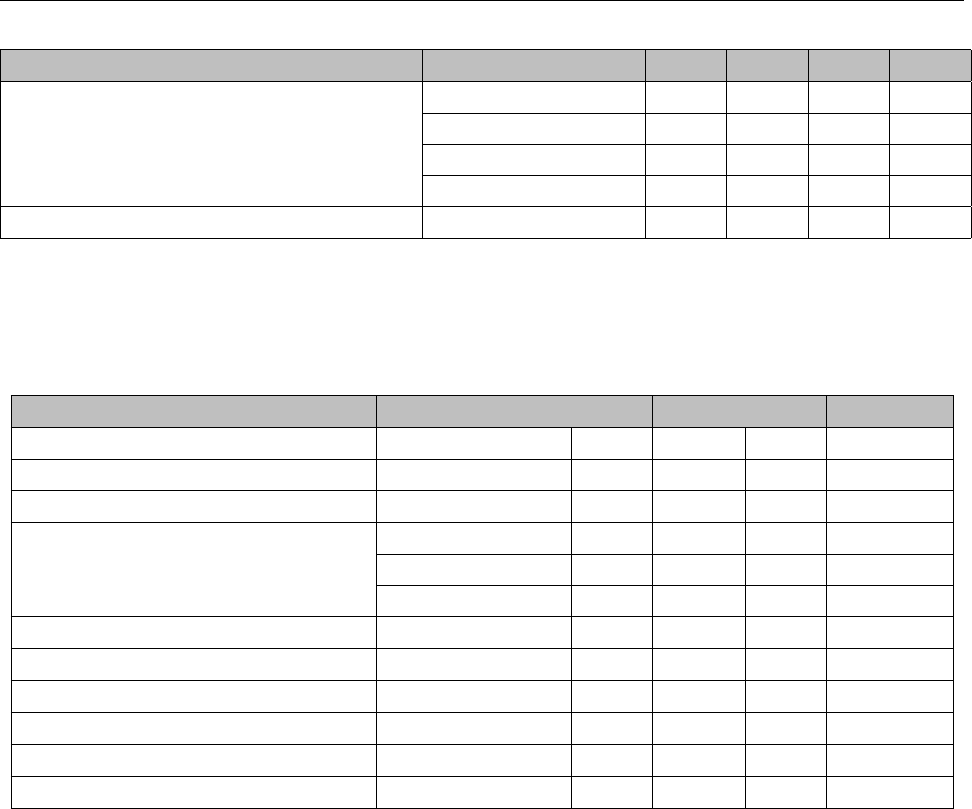
5. ELECTRICAL CHARACTERISTICS
Parameter Conditions Min Typ Max Unit
Out-of-band blocking performance
30 MHz ~2000 MHz –10 - - dBm
2000 MHz ~2400 MHz –27 - - dBm
2500 MHz ~3000 MHz –27 - - dBm
3000 MHz ~12.5 GHz –10 - - dBm
Intermodulation - –36 - - dBm
5.5.2 Transmitter
Table 11: Transmitter Characteristics – BLE
Parameter Conditions Min Typ Max Unit
RF transmit power - - - dBm
Gain control step - - - - dBm
RF power control range - –1 - +2 dBm
Adjacent channel transmit power
F = F0 ± 2 MHz - –52 - dBm
F = F0 ± 3 MHz - –58 - dBm
F = F0 ± > 3 MHz - –60 - dBm
∆f1avg - - - 265 kHz
∆f2max - 247 - - kHz
∆f2avg/∆f1avg - - –0.92 - -
ICFT - - –10 - kHz
Drift rate - - 0.7 - kHz/50 µs
Drift - - 2 - kHz
Espressif Systems 12 ESP32-WROVER-B Datasheet V1.0
1.59
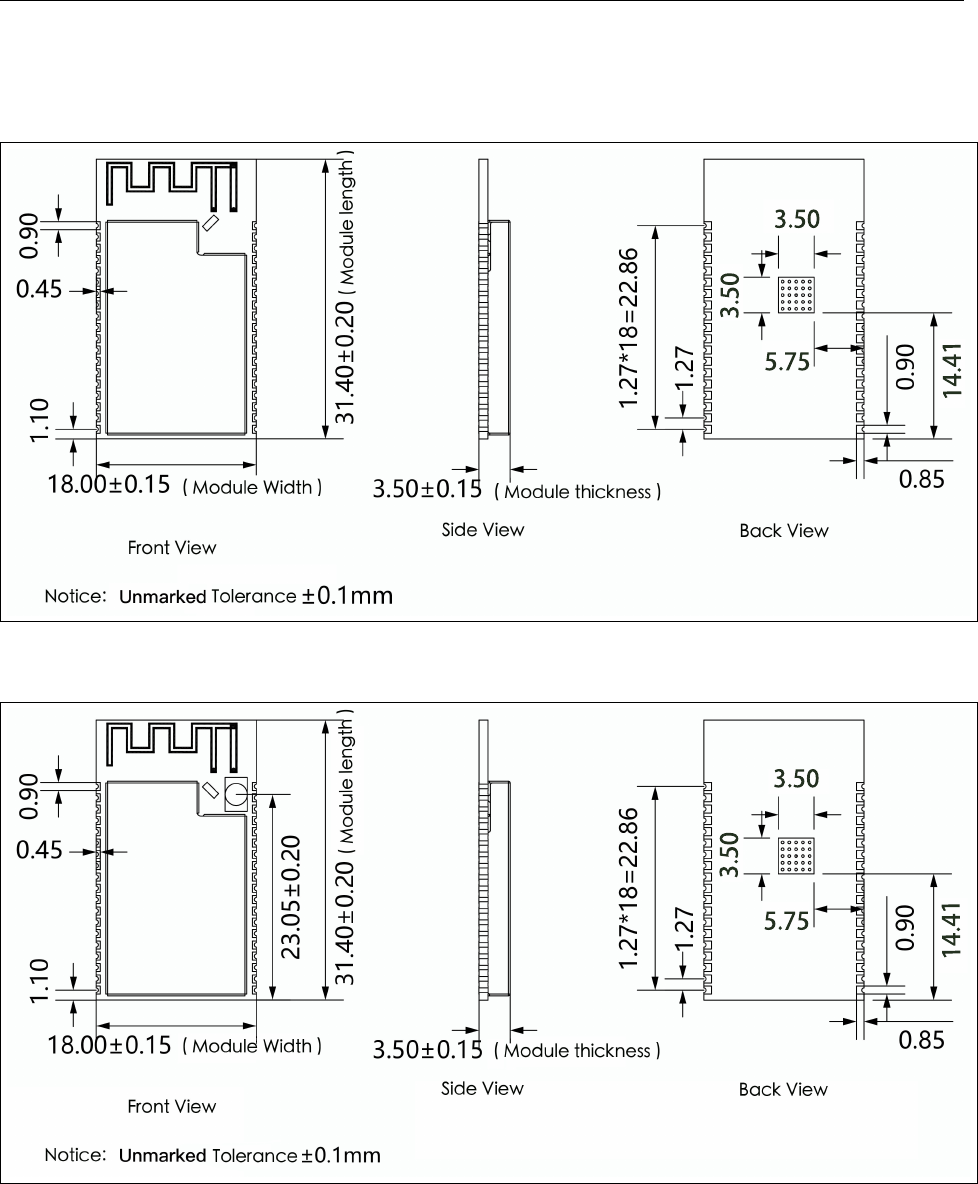
6. DIMENSIONS
6Dimensions
㌀⸀㔀 ㌀⸀㔀
㌀⸀㔀
㌀⸀㔀 ㌀⸀㔀
㌀⸀㔀
㔀⸀㜀㔀㔀⸀㜀㔀
㔀⸀㜀㔀
㐀⸀㐀㐀⸀㐀
㐀⸀㐀
Figure 4: ESP32-WROVER-B Dimensions
㌀⸀㔀 ㌀⸀㔀
㌀⸀㔀
㌀⸀㔀 ㌀⸀㔀
㌀⸀㔀
㔀⸀㜀㔀㔀⸀㜀㔀
㔀⸀㜀㔀
㐀⸀㐀㐀⸀㐀
㐀⸀㐀
Figure 5: ESP32-WROVER-IB Dimensions
Espressif Systems 13ESP32-WROVER-B Datasheet V1.0
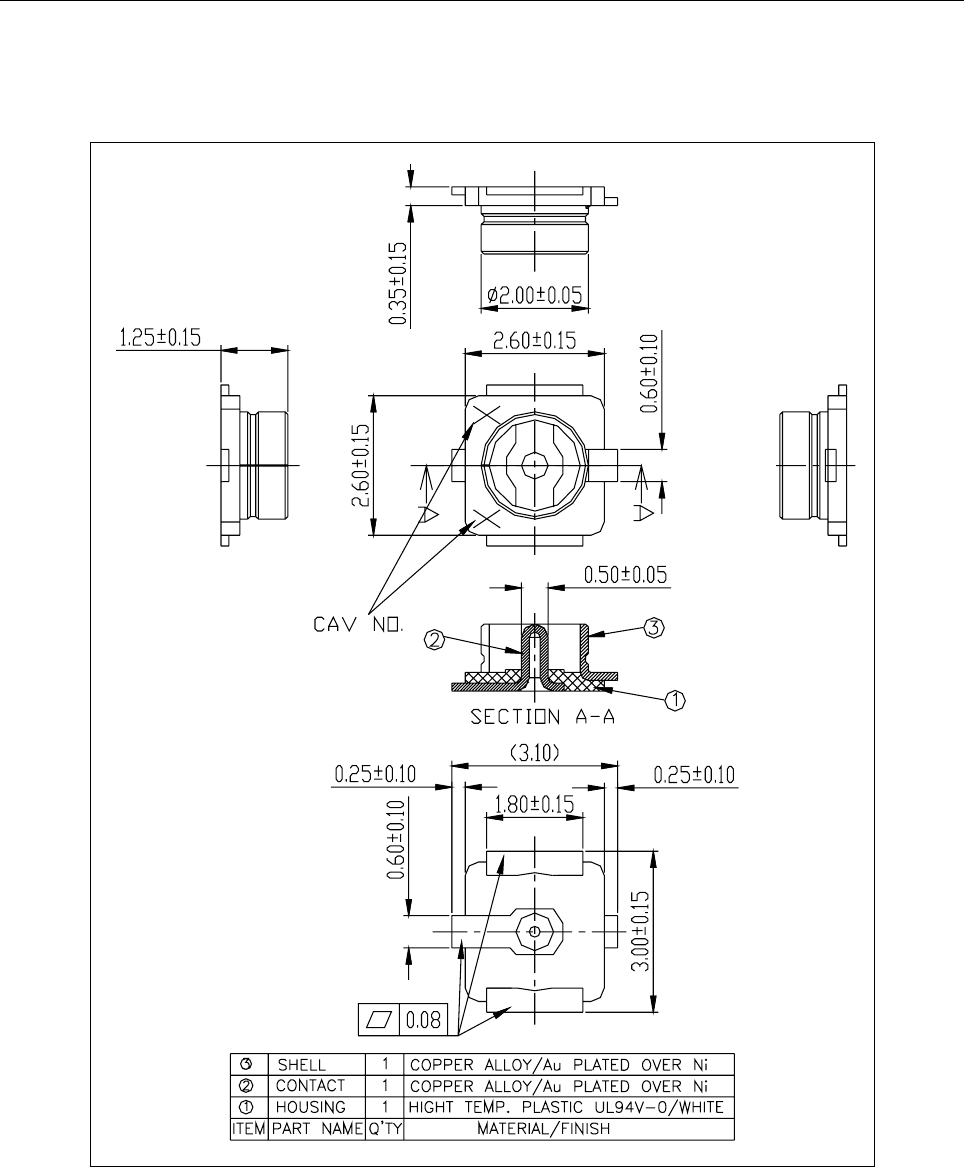
7. U.FL CONNECTOR DIMENSIONS
7. U.FL Connector Dimensions
Unit: mm
Figure 6: ESP32-WROVER-B/ESP32-WROVER-IB U.FL Connector Dimensions
Espressif Systems 14ESP32-WROVER-B Datasheet V1.0

8. LEARNING RESOURCES
8. Learning Resources
8.1 Must-Read Documents
The following link provides documents related to ESP32.
•ESP32 Datasheet
This document provides an introduction to the specifications of the ESP32 hardware, including overview, pin
definitions, functional description, peripheral interface, electrical characteristics, etc.
•ESP-IDF Programming Guide
It hosts extensive documentation for ESP-IDF ranging from hardware guides to API reference.
•ESP32 Technical Reference Manual
The manual provides detailed information on how to use the ESP32 memory and peripherals.
•ESP32 Hardware Resources
The zip files include the schematics, PCB layout, Gerber and BOM list of ESP32 modules and development
boards.
•ESP32 Hardware Design Guidelines
The guidelines outline recommended design practices when developing standalone or add-on systems
based on the ESP32 series of products, including ESP32, the ESP-WROOM-32 module, and ESP32-
DevKitC—the development board.
•ESP32 AT Instruction Set and Examples
This document introduces the ESP32 AT commands, explains how to use them, and provides examples of
several common AT commands.
•Espressif Products Ordering Information
8.2 Must-Have Resources Here
are the ESP32-related must-have resources.
•ESP32 BBS
This is an Engineer-to-Engineer (E2E) Community for ESP32 where you can post questions, share knowledge,
explore ideas, and help solve problems with fellow engineers.
•ESP32 GitHub
ESP32 development projects are freely distributed under Espressif’s MIT license on GitHub. It is established
to help developers get started with ESP32 and foster innovation and the growth of general knowledge about
the hardware and software surrounding ESP32 devices.
•ESP32 Tools
This is a webpage where users can download ESP32 Flash Download Tools and the zip file ”ESP32 Certifi-
cation and Test”.
•ESP-IDF
This webpage links users to the official IoT development framework for ESP32.
•ESP32 Resources
This webpage provides the links to all available ESP32 documents, SDK and tools. �����������
Espressif Systems 15ESP32-WROVER-B Datasheet V1.0

REVISION HISTORY
Revision History
Date Version Release notes
2018.05 V1.0 First release.
Espressif Systems 16ESP32-WROVER-B Datasheet V1.0
,6('566:DUQLQJ,6('5)([SRVXUH6WDWHPHQW
ISED RSS Warning:
This device complies with Innovation, Science and Economic Development Canada licence-exempt
RSS standard(s). Operation is subject to the following two conditions: (1) this device may not cause
interference, and (2) this device must accept any interference, including interference that may cause
undesired operation of the device.
Le présent appareil est conforme aux CNR d'ISED applicables aux appareils radio exempts de licence.
L'exploitation est autorisée aux deux conditions suivantes:
(1) l'appareil ne doit pas produire de brouillage, et
(2) l'utilisateur de l'appareil doit accepter tout brouillage radioélectrique subi, même si le brouillage
est susceptible d'en compromettre le fonctionnement.
ISED RF exposure statement:
This equipment complies with ISED radiation exposure limits set forth for an uncontrolled environment.
This equipment should be installed and operated with minimum distance 20cm between the radiator& your
body.This transmitter must not be co-located or operating in conjunction with any other antenna or transmitter.
Le rayonnement de la classe b repecte ISED fixaient un environnement non contrôlés.Installation et mise en
œuvre de ce matériel devrait avec échangeur distance minimale entre 20 cm ton corps.Lanceurs ou ne peuvent
pas coexister cette antenne ou capteurs avec d’autres.
FCC Radiation Exposure Statement:
This equipment complies with FCC radiation exposure limits set forth for an uncontrolled
environment .This equipment should be installed and operated with minimum distance 20cm between
the radiator& your body.
)&&6WDWHPHQW
$Q\&KDQJHVRUPRGLILFDWLRQVQRWH[SUHVVO\DSSURYHGE\WKHSDUW\UHVSRQVLEOHIRUFRPSOLDQFHFRXOGYRLG
WKHXVHU¶VDXWKRULW\WRRSHUDWHWKHHTXLSPHQW
7KLVGHYLFHFRPSOLHVZLWKSDUWRIWKH)&&5XOHV2SHUDWLRQLVVXEMHFWWRWKHIROORZLQJWZRFRQGLWLRQV
7KLVGHYLFHPD\QRWFDXVHKDUPIXOLQWHUIHUHQFHDQG
7KLVGHYLFHPXVWDFFHSWDQ\LQWHUIHUHQFHUHFHLYHGLQFOXGLQJLQWHUIHUHQFHWKDWPD\FDXVHXQGHVLUHG
RSHUDWLRQ
)&&,6('/DEHO,QVWUXFWLRQV
7KHRXWVLGHRIILQDOSURGXFWVWKDWFRQWDLQVWKLVPRGXOHGHYLFHPXVWGLVSOD\DODEHOUHIHUULQJWRWKHHQFORVHG
PRGXOH7KLVH[WHULRUODEHOFDQXVHZRUGLQJVXFKDV³&RQWDLQV7UDQVPLWWHU0RGXOH
)&&,'$&=(63:529(5%,IC:21098-ESPWROVERB" or “Contains
FCC ID:2AC7Z-ESP32WROVERB,IC:21098-ESPWROVERB” Any similar wording that expresses the
same meaning may be used.